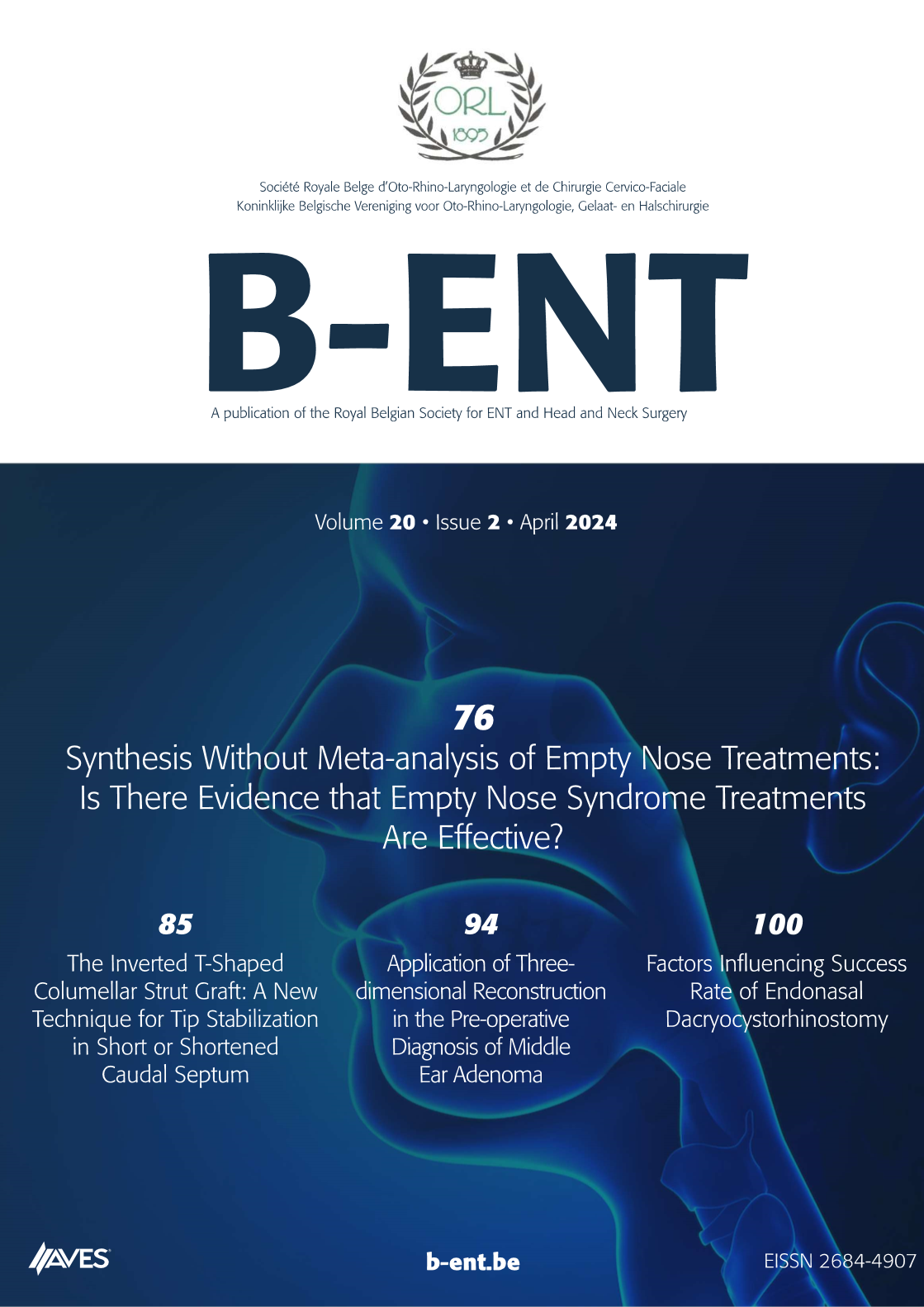Correlation of Otorhinolaryngologic Symptoms with Physical Findings in Behçet’s Disease. Objective: Behçet’s disease is a chronic systemic inflammatory disease of unknown etiology. We examined the correlation between otorhinolaryngologic symptoms and otorhinolaryngologic physical findings in patients with Behçet’s disease, in search of strategies to reduce the morbidity rates.
Methods: Seventy-two patients diagnosed with Behçet’s disease were included. After giving a detailed history of oropharyngeal, nasal, laryngeal, and otic symptoms, patients were examined endoscopically by an otolaryngologist, and the findings were recorded.
Results: Thirty-nine of the patients were male, and thirty-three were female. The mean age was 39.2±3.4, and the mean disease duration was 8.24±4.2 years. Statistically significant correlations were observed between ear lesions and ear symptoms (crusting and otic pain), nasal lesions and nasal symptoms (crusting and nasal pain), oropharyngeal lesions and oropharyngeal symptoms (pain and difficulty in swallowing), and laryngeal lesions and laryngeal symptoms (hoarseness, difficulty in swallowing, and pain).
Conclusion: The results demonstrated a positive correlation between symptoms and otorhinolaryngeal examination findings in Behçet’s disease. Potential morbidities can be prevented by routine endoscopic otorhinolaryngeal examinations and symptom screening of patients with Behçet’s disease and arranging the therapy accordingly.



.png)
